Astronomers have captured incredible images of the birth of a distant planet.
The planet orbits the star HD 135344B, which is located around 440 light–years from Earth.
The stunning snaps show the planet beginning to sculpt spirals of dust and gas around its home star.
The scientists who made the discovery say that the planet is likely twice the size of Jupiter and is as far from its star as Neptune is from the Sun.
Planets are formed from spinning halos of hot material known as protoplanetary discs, which form around very young stars.
As planets start to form, they ‘sweep’ their orbits to produce intricate patterns of rings, gaps, and spirals in the dust.
Although astronomers have spotted these patterns in the past, this is the first time anyone has caught one of these planetary sculptures in the act.
Lead author Francesco Maio, a doctoral researcher at the University of Florence, says: ‘We will never witness the formation of Earth, but here, around a young star 440 light–years away, we may be watching a planet come into existence in real time.’
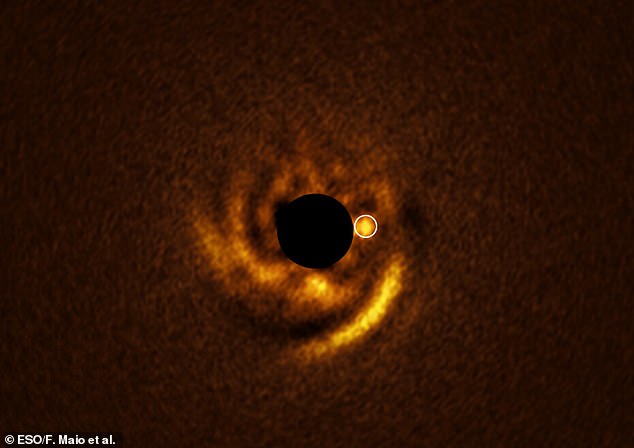
Astronomers have spotted the birth of a new planet forming around a young, distant star. This gives a unique glimpse into how our own planet might have formed over four billion years ago
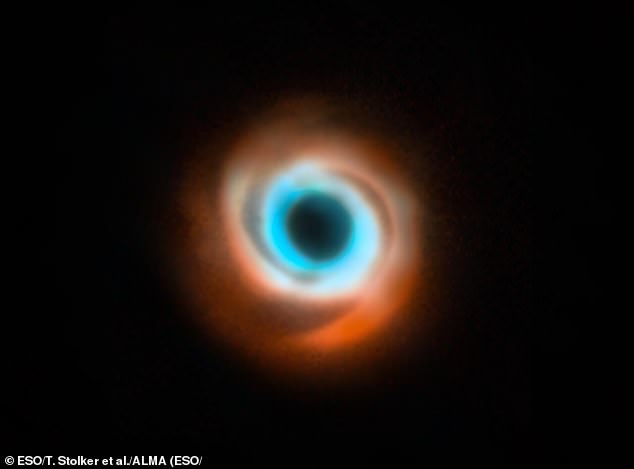
The star HD 135344B has a distinctive spiral pattern, which astronomers believe is caused by a young planet starting to disturb the cloud of gas and dust which spins around young stars
The European Southern Observatory’s Very Large Telescope (VLT) first spotted the spiral patterns around HD 135344B back in 2016.
However, the equipment used in those early studies wasn’t sensitive enough to confirm whether there was a protoplanet – the first stage of planetary formation – within the rings.
In a new study, published today in the journal Astronomy and Astrophysics, researchers have used the VLT’s new Enhanced Resolution Imager and Spectrograph (ERIS) to pinpoint the planet’s likely location.
Mr Maio and his co–authors spotted a ‘planet candidate’ – something strongly believed to be a planet – right at the base of one of the disc’s spiral arms.
If these spirals were caused by a planet disturbing the ring of dust, that is exactly where astronomers would expect the planet to be.
What makes these observations so special is that the astronomers were actually able to capture light coming directly from the planet itself.
This is a significant piece of evidence in favour of the theory that gaps and rings in protoplanetary disks around other stars are hiding protoplanets of their own.
Mr Maio says: ‘What makes this detection potentially a turning point is that, unlike many previous observations, we are able to directly detect the signal of the protoplanet, which is still highly embedded in the disc.
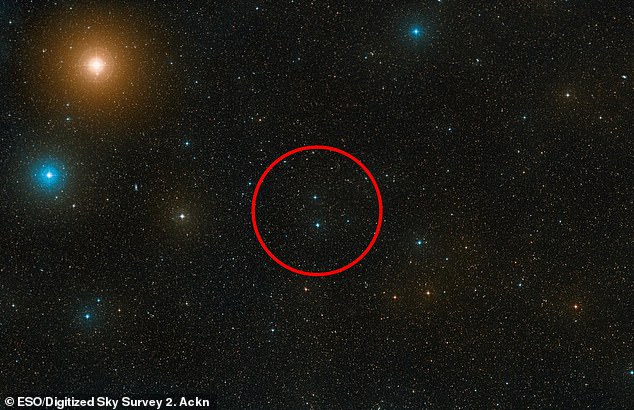
HD 135344B is located around 4440 light–years from Earth. This image shows the sky around this star. In the centre of the photo, you can see two bright stars next to each other. HD 135344B is the one at the bottom
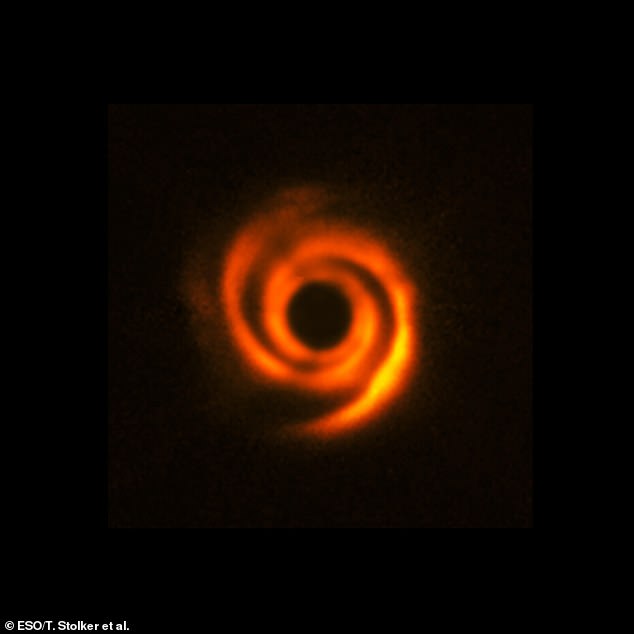
For the first time, astronomers have managed to detect a planet at the base of one of these spiral arms. This is strong evidence that the patterns around some stars are caused by newborn planets
These observations could also help shed light on how the planets in our own solar system formed over four billion years ago.
At the same time, a second group of researchers have used ERIS to spot another potential planet forming around another young, distant star.
V960 Mon sits roughly 5,000 light years from Earth and is believed to be extremely young.
When astronomers first found captured images of it in 2023, they found that the star was spitting out arms of gas and dust wider than our entire Milky Way.
In this new study, astronomers found that the spiral arms are ‘fragmenting’ in a way that suggests a process known as ‘gravitational instability’ is at play.
Planets normally form like snowballs rolling down a hill, as matter collides and clumps together into ever bigger lumps – this is known as core accretion.
But sometimes, when the gas and dust are cooler and further from the host star, matter will slowly pull itself together under gravity and form clumps that collapse into the core of a planet.
Scientists believe this is how gas giants like Jupiter and Saturn typically form.
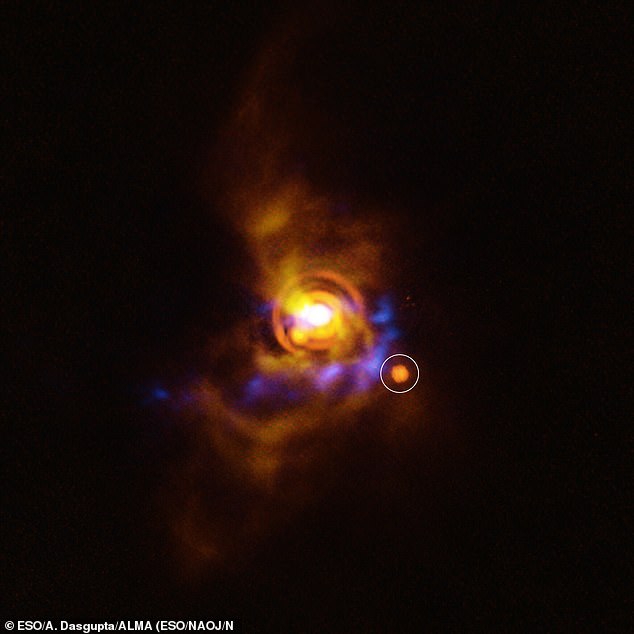
Researchers have also spotted an object around the star V960 Mons. They believe this may be a planet or brown dwarf forming through a process called gravitational instability. This would be the first time that anyone has seen this process in action
If this is what has caused the fragmentation around V960 Mons, it would be the first time that anyone has ever seen a planet forming via gravitational instability.
However, astronomers now say that something even stranger could be lurking around V960 Mons.
The researchers believe that the object could be a ‘brown dwarf’, an object bigger than a planet that didn’t gain enough mass to shine as a star.
These giant planets can be between 13 and 80 times the size of Jupiter and typically orbit far out from their companion stars.
Likewise, no one has yet captured the exact moment that one of these mysterious objects comes into existence.











